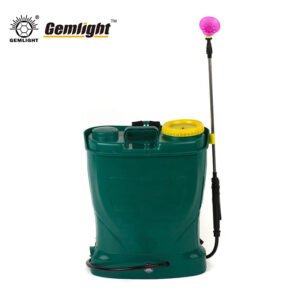When U look for a reliable cutting tool, the carbon steel machete stands as a timeless choice. Across Africa, South America, and many other regions, this blade has become an essential companion for farmers, forestry workers, construction teams, and outdoor industries. Its reputation for durability, sharpness, and versatility comes from one main factor: carbon steel.
In this comprehensive guide, U will discover everything about carbon steel machetes—from materials and blade types to industrial applications, maintenance tips, and sourcing strategies. This article is written for B2B buyers, distributors, and professionals who demand the best balance of quality and value.
1. Why Carbon Steel Is the Heart of a Machete
The blade is the soul of every machete, and carbon steel has remained the most preferred choice for decades. But why?
-
Hardness and Strength – Carbon steel blades offer high hardness after proper heat treatment, ensuring a sharp cutting edge that lasts.
-
Flexibility – Unlike brittle stainless steel, carbon steel has enough flexibility to withstand heavy chopping without breaking.
-
Ease of Sharpening – Field workers can easily sharpen their machete on a simple stone, keeping it effective in remote conditions.
-
Cost-Effective – Compared to stainless steel, carbon steel delivers better value for large-volume agricultural and forestry markets.
For industries where efficiency and durability matter more than shiny looks, carbon steel is the trusted solution.
2. Popular Styles of Carbon Steel Machetes
Machetes are not “one shape fits all.” Different industries and regions favor different blade designs. Here are the most common carbon steel machete types used globally:
-
Latin-Style Machete – Straight blade, widely used in agriculture and forestry.
-
Panga Machete – Popular in Africa, with a broad belly for chopping sugarcane and wood.
-
Bolo Machete – Favored in South America and the Philippines, known for its forward-weighted blade for clearing dense vegetation.
-
Billhook Machete – Curved blade used for cutting branches and forestry tasks.
-
Parang Machete – Southeast Asian design, excellent for jungle work.
-
Cane Machete – Specially designed for harvesting sugarcane.
Each style has unique advantages, but they all rely on carbon steel blades for dependable cutting power.
3. Industrial Applications of Carbon Steel Machetes
Carbon steel machetes are not just tools; they are vital industrial equipment across multiple sectors.
-
Agriculture – Sugarcane harvesting, crop clearing, and general farm work.
-
Forestry – Cutting wood, trimming branches, and trail clearing.
-
Construction – Site clearing and cutting materials in rural projects.
-
Outdoor Supply Chains – Serving hunters, survivalists, and outdoor gear distributors.
-
Military & Civil Defense – In some regions, machetes are issued as standard field equipment.
For buyers in Africa, South America, and Asia, carbon steel machetes are always in demand due to their practical utility in daily work.
4. Key Features That Make a Superior Carbon Steel Machete
When evaluating suppliers, U must pay attention to specific technical features that determine blade quality:
-
Steel Grade – High-carbon steel ensures hardness and sharpness retention.
-
Heat Treatment – Proper quenching and tempering improve flexibility and reduce breakage.
-
Blade Finish – Options include polished, painted, or anti-rust coatings.
-
Handle Material – Wood handles for traditional comfort; plastic handles for durability in humid environments.
-
Assembly Quality – Strong rivets and precise fitting prevent handle loosening.
By focusing on these factors, U ensure your customers receive machetes that perform reliably in tough conditions.
5. Advantages of Carbon Steel Machetes Over Stainless Steel
Both stainless steel and carbon steel have their place in the machete industry. But for large-scale agricultural and forestry buyers, carbon steel usually wins.
-
Sharper Cutting Edge – Retains a razor edge longer than stainless steel.
-
Lower Cost – Ideal for wholesale distribution.
-
Field-Proven Durability – Trusted by farmers for decades.
-
Faster Sharpening – Easily restored in the field with basic tools.
For B2B distributors, this means fewer complaints, higher reorder rates, and stronger customer trust.
6. Global Market Demand for Carbon Steel Machetes
Carbon steel machetes dominate markets in:
-
Africa – Used widely in farming, sugarcane harvesting, and construction.
-
South America – Demand for bolo and cane machetes is extremely strong.
-
Southeast Asia – Parang machetes are critical for jungle and plantation work.
Distributors in these regions prefer factories with OEM/ODM capability, competitive pricing, and strong logistics support.
7. How to Maintain a Carbon Steel Machete
Although durable, carbon steel blades need simple maintenance to maximize lifespan:
-
Clean After Use – Remove sap, dirt, or plant acids.
-
Oil the Blade – Apply light oil to prevent rust.
-
Proper Storage – Keep dry, avoid leaving in damp environments.
-
Sharpen Regularly – Maintain cutting efficiency with simple sharpening stones.
By teaching your customers these tips, U reduce warranty claims and increase product satisfaction.
8. What to Consider When Sourcing Carbon Steel Machetes
As a buyer, U must evaluate suppliers carefully. Key factors include:
-
Production Capacity – A factory with multiple production lines ensures timely delivery.
-
Material Quality – Only high-carbon steel guarantees blade performance.
-
Certifications – International quality and safety standards build trust.
-
Customization Options – OEM/ODM services help U brand the machetes with your own logo.
-
Logistics & Shipping – Reliable shipment schedules prevent delays during peak agricultural seasons.
By partnering with the right supplier, U secure consistent supply, strong margins, and long-term customer loyalty.
9. Why Distributors Trust Carbon Steel Machete Factories in China
China has become a leading hub for carbon steel machete production. Reasons include:
-
Rich Steel Resources – Easy access to high-carbon raw materials.
-
Advanced Heat Treatment Technology – Ensures blades are tough yet flexible.
-
Competitive Labor and Production Costs – Lower prices without sacrificing quality.
-
OEM & ODM Services – Buyers can design private-label machetes.
-
Export Experience – Decades of supplying Africa and South America.
This makes Chinese factories the preferred choice for B2B buyers who demand both quality and affordability.
10. Future of Carbon Steel Machetes in Global Trade
Even as technology evolves, manual agricultural tools remain in high demand in developing regions. Carbon steel machetes will continue to dominate the market because:
-
They offer unmatched durability.
-
They serve industries where automation is not feasible.
-
They remain affordable for mass distribution.
Forward-looking distributors who secure reliable supply chains today will remain competitive for decades.
Conclusion
The carbon steel machete is more than a simple blade—it is a lifeline for industries across farming, forestry, and outdoor markets. With its strength, sharpness, and affordability, it continues to be the most practical cutting tool worldwide.
For B2B buyers, investing in carbon steel machetes means higher profit margins, reliable supply, and long-term customer trust. When U choose a factory partner with proven expertise in steel, heat treatment, and OEM branding, U gain an edge in competitive markets like Africa and South America.
If U want your next sourcing project to succeed, make sure your machetes are forged from high-carbon steel—because in the world of agriculture and outdoor industries, nothing cuts like carbon steel.
View products




